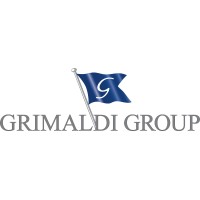
Grimaldi Group Company Cyber Security Posture
grimaldi.napoli.itEstablished in 1947, Grimaldi is a fully integrated multinational logistics Group specialising in maritime transport of cars, rolling cargo, containers and passengers. Wholly owned by the Grimaldi family, the Group is led by Gianluca and Emanuele Grimaldi, sons of the founder Guido, and their brother-in-law Diego Pacella. Family members are complemented by a highly skilled international management team, based both at the Group's headquarters in Naples (Italy) and at subsidiary companies and branches located in over 25 countries.
Grimaldi Group Company Details
grimaldi-group
10,001+ employees
57853
484
Truck Transportation
grimaldi.napoli.it
Scan still pending
GRI_3155536
In-progress
Between 900 and 1000
This score is AI-generated and less favored by cyber insurers, who prefer the TPRM score.
 Grimaldi Group Global Score
Grimaldi Group Global Score.png)

Grimaldi Group Company Scoring based on AI Models
| Model Name | Date | Description | Current Score Difference | Score |
|---|---|---|---|---|
| AVERAGE-Industry | 03-12-2025 | This score represents the average cybersecurity rating of companies already scanned within the same industry. It provides a benchmark to compare an individual company's security posture against its industry peers. | N/A | Between 900 and 1000 |
Grimaldi Group Company Cyber Security News & History
| Entity | Type | Severity | Impact | Seen | Url ID | Details | View |
|---|
Grimaldi Group Company Subsidiaries

Established in 1947, Grimaldi is a fully integrated multinational logistics Group specialising in maritime transport of cars, rolling cargo, containers and passengers. Wholly owned by the Grimaldi family, the Group is led by Gianluca and Emanuele Grimaldi, sons of the founder Guido, and their brother-in-law Diego Pacella. Family members are complemented by a highly skilled international management team, based both at the Group's headquarters in Naples (Italy) and at subsidiary companies and branches located in over 25 countries.
Access Data Using Our API

Get company history
.png)
Grimaldi Group Cyber Security News
News Content Hub - Grimaldi confirms 'pioneering' US$1.3Bn order for nine ropax ships
Grimaldi confirms 'pioneering' US$1.3Bn order for nine ropax ships · Register to attend by visiting our events page. · Watch recordings from all ...
EY in Greece advised Grimaldi Euromed S.p.A. and Minoan Lines S.A. on the acquisition of a 67% stake in the Heraklion Port Authority S.A., on Crete Island, Greece
EY exists to build a better working world, helping create long-term value for clients, people and society and build trust in the capital markets ...
Grimaldi takes delivery of electric hybrid RoRo
The vessel is equipped with electronically controlled engines and with an exhaust gas cleaning system for the reduction of sulphur and ...
Geopolitical instability still big trouble for shipping, ICS report notes
Global political instability may now be the number one concern for shipowners, operators and C-suite personnel, according to the fourth and ...
Grimaldi places $1.5 billion order for nine methanol-fueled vessels
These ships, capable of running on methanol, are designed to improve both passenger and cargo transport in the Mediterranean and Baltic seas.
Silverstream Technologies test air lubrication system with Grimaldi Group
UK-based Silverstream Technologies has completed trials of its air lubrication system, Silverstream System, on Grimaldi Group's newbuild Ro-Ro ...
Telespazio, Grimaldi to Provide Satcom Services to Neapolitan Shipping
Specifically, Telespazio will take care of the design and supply of on-board systems for satellite communications and related broadband services ...
Law360 Covers Launch of Firm’s Crisis Communications and Strategy Group
Law360 provides an overview of the firm's new Crisis Communications and Strategy group, which serves “corporate clients, public figures, ...
Car Carrier Grimaldi Waits For ‘the World to Restart’
“We are waiting for the world to restart,” said Emanuele Grimaldi, one of the co-owners of Italy's Grimaldi Group SpA, a closely held shipping ...

Grimaldi Group Similar Companies
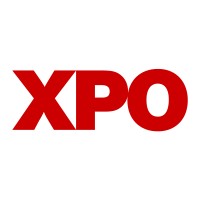
XPO
XPO provides world-class transportation solutions to the most successful companies in the world. We have a high-energy team around the globe focused on being the best in the industry. Given the scope of our business, there are opportunities to do satisfying work in many different fields, and at all
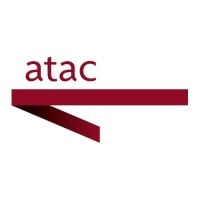
ATAC SpA
With over 100 years of history, Atac is Rome's municipal utility for public transport services and Italy's leading urban mobility operator, as well as being one of the largest Local Public Transport companies in Europe. From the historical centre to the outskirts, Atac’s network covers a territor

The Kowloon Motor Bus Company (1933) Limited
Established in 1933, The Kowloon Motor Bus Company (1933) Limited ("KMB") is the largest franchised bus operator in Hong Kong, serving more than 2.8 million passenger-trips each day. A workforce of more than 12,300 employees, including some 10,000 bus captains, ensures that customers enjoy high-qual
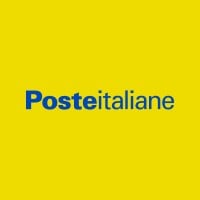
Poste Italiane
With our over 160-year history, approximately 120,000 employees and 12,800 post offices, total financial assets of €580 billion and 35 million customers, the Group occupies a unique position in terms of size, recognisability, reach and customer loyalty. Poste Italiane is Italy's largest service inf
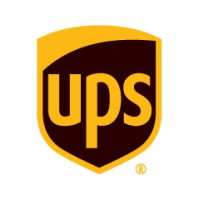
UPS
Operating in more than 200 countries and territories, we’re committed to moving our world forward by delivering what matters. Beginning as a small messenger service, UPS was started by two enterprising teenagers and a $100 loan. Now, we’re almost 500,000 UPSers strong, with operations around the glo

Schneider
Put us on the job and consider it done. Schneider is a premier provider of transportation and logistics services headquartered in Green Bay, Wisconsin, and with offices in Chicago, Dallas and many cities in between. Offering one of the broadest portfolios in the industry, Schneider’s solutions inclu

Frequently Asked Questions
Explore insights on cybersecurity incidents, risk posture, and Rankiteo's assessments.
Grimaldi Group CyberSecurity History Information
How many cyber incidents has Grimaldi Group faced?
Total Incidents: According to Rankiteo, Grimaldi Group has faced 0 incidents in the past.
What types of cybersecurity incidents have occurred at Grimaldi Group?
Incident Types: The types of cybersecurity incidents that have occurred include .
Incident Details
What are the most common types of attacks the company has faced?
Additional Questions
What Do We Measure?
















Every week, Rankiteo analyzes billions of signals to give organizations a sharper, faster view of emerging risks. With deeper, more actionable intelligence at their fingertips, security teams can outpace threat actors, respond instantly to Zero-Day attacks, and dramatically shrink their risk exposure window.
These are some of the factors we use to calculate the overall score:
Identify exposed access points, detect misconfigured SSL certificates, and uncover vulnerabilities across the network infrastructure.
Gain visibility into the software components used within an organization to detect vulnerabilities, manage risk, and ensure supply chain security.
Monitor and manage all IT assets and their configurations to ensure accurate, real-time visibility across the company's technology environment.
Leverage real-time insights on active threats, malware campaigns, and emerging vulnerabilities to proactively defend against evolving cyberattacks.




